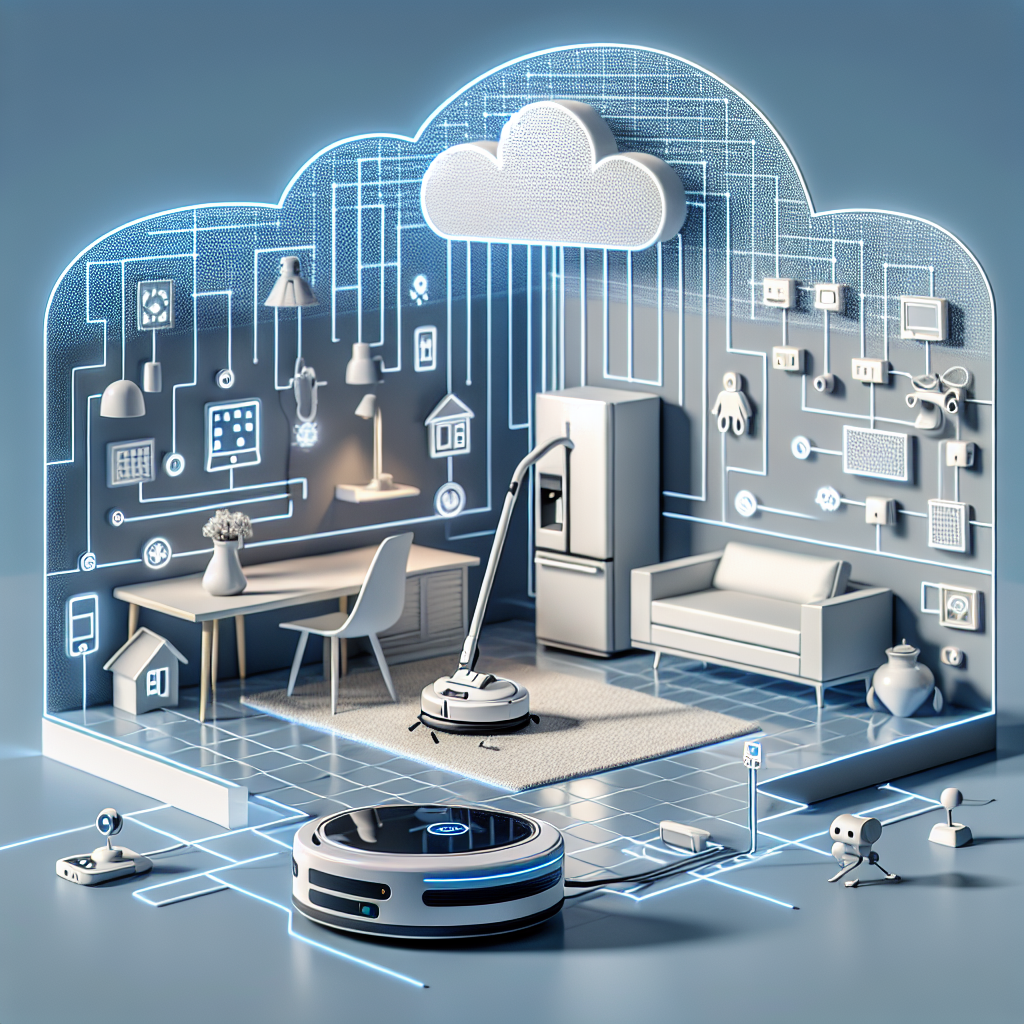With the rapid advancement of technology, artificial intelligence (AI) is playing an increasingly important role in our daily lives. One area where AI is making a significant impact is in smart home technology and IoT devices. By implementing AI automation in these devices, homeowners can enjoy a more convenient and efficient living experience. In this article, we will explore how AI is being used in smart home technology and IoT devices, as well as the benefits and challenges of implementing AI automation.
AI in Smart Home Technology
AI-powered smart home technology uses machine learning algorithms to analyze data and make decisions based on patterns and trends. This allows devices to learn from user behavior and adapt to their preferences over time. For example, smart thermostats can adjust the temperature based on the homeowner’s schedule and habits, while smart lighting systems can adjust brightness and color temperature to create the desired ambiance.
One of the key benefits of using AI in smart home technology is the ability to automate routine tasks and improve energy efficiency. For example, AI-powered smart thermostats can optimize heating and cooling schedules to reduce energy consumption without sacrificing comfort. Similarly, AI-powered smart lighting systems can adjust brightness and color temperature based on natural light levels and user preferences, leading to energy savings and improved well-being.
Another advantage of using AI in smart home technology is the ability to create a more personalized and intuitive user experience. For example, AI-powered virtual assistants like Amazon Alexa and Google Assistant can understand natural language commands and provide personalized recommendations based on user preferences. This not only makes it easier for homeowners to control their smart devices but also enhances the overall user experience.
AI in IoT Devices
In addition to smart home technology, AI is also being used in IoT devices to improve functionality and performance. IoT devices are connected to the internet and can communicate with each other to exchange data and perform tasks. By incorporating AI algorithms into IoT devices, manufacturers can enhance their capabilities and create more intelligent and autonomous systems.
For example, AI-powered security cameras can analyze video footage in real-time to detect suspicious activity and alert homeowners of potential threats. Similarly, AI-powered sensors can monitor environmental conditions and adjust settings accordingly to optimize energy efficiency and comfort. By leveraging AI in IoT devices, manufacturers can create more sophisticated and adaptive systems that can improve safety, security, and efficiency.
Benefits of Implementing AI Automation in Smart Home Technology and IoT Devices
There are several benefits of implementing AI automation in smart home technology and IoT devices, including:
1. Improved Convenience: AI-powered smart devices can automate routine tasks and adapt to user preferences, making it easier for homeowners to control their environment and devices.
2. Energy Efficiency: AI algorithms can optimize heating, cooling, lighting, and other systems to reduce energy consumption and lower utility bills.
3. Personalized User Experience: AI-powered virtual assistants can provide personalized recommendations and respond to natural language commands, creating a more intuitive user experience.
4. Enhanced Security: AI-powered security cameras and sensors can detect suspicious activity and alert homeowners of potential threats, improving overall safety and security.
Challenges of Implementing AI Automation in Smart Home Technology and IoT Devices
While there are many benefits to using AI in smart home technology and IoT devices, there are also some challenges to consider, including:
1. Privacy Concerns: AI-powered devices collect and analyze data to make decisions, raising concerns about privacy and data security.
2. Compatibility Issues: Integrating AI automation into existing smart home systems and IoT devices can be complex and may require additional hardware or software upgrades.
3. Reliability and Maintenance: AI algorithms require regular updates and maintenance to ensure optimal performance, which can be time-consuming and costly.
4. Cost: Implementing AI automation in smart home technology and IoT devices can be expensive, especially for homeowners with limited budgets.
FAQs
Q: How does AI automation work in smart home technology and IoT devices?
A: AI automation in smart home technology and IoT devices uses machine learning algorithms to analyze data and make decisions based on patterns and trends. This allows devices to learn from user behavior and adapt to their preferences over time.
Q: What are some examples of AI-powered smart home devices?
A: Some examples of AI-powered smart home devices include smart thermostats, smart lighting systems, security cameras, virtual assistants like Amazon Alexa and Google Assistant, and sensors that monitor environmental conditions.
Q: What are the benefits of using AI in smart home technology and IoT devices?
A: Some benefits of using AI in smart home technology and IoT devices include improved convenience, energy efficiency, personalized user experience, and enhanced security.
Q: What are some challenges of implementing AI automation in smart home technology and IoT devices?
A: Some challenges of implementing AI automation in smart home technology and IoT devices include privacy concerns, compatibility issues, reliability and maintenance, and cost.
In conclusion, AI automation is transforming smart home technology and IoT devices, allowing homeowners to enjoy a more convenient, efficient, and personalized living experience. While there are challenges to consider, the benefits of using AI in smart home technology and IoT devices are undeniable. By leveraging AI algorithms, manufacturers can create more intelligent and adaptive systems that improve safety, security, and energy efficiency. As AI continues to evolve, we can expect to see even more innovative solutions that enhance our daily lives.

